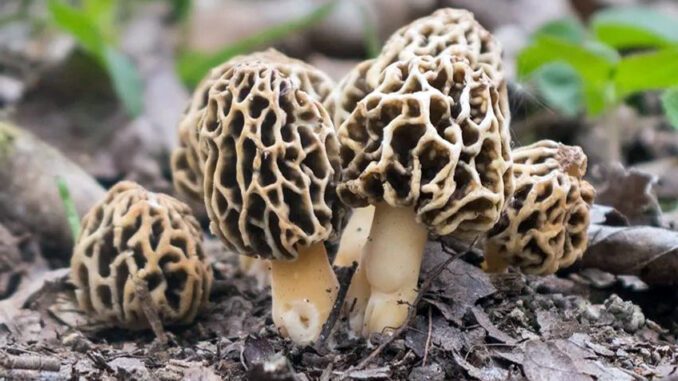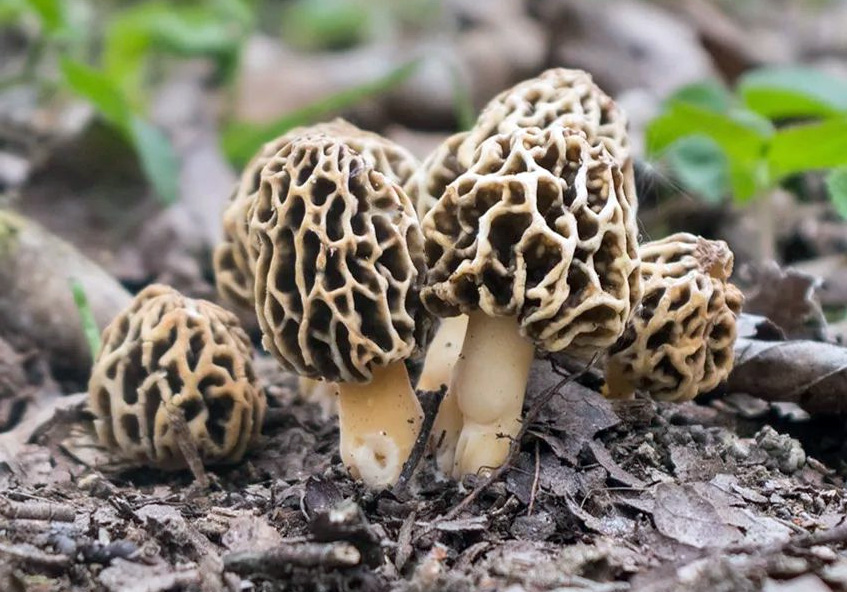
Do you want to know more about the habitat of the morel mushroom? Find out everything you need to know in our article.
Stop looking in unsuitable places and learn more about the true habitat of the morel!
Here we go!

The Perfect Habitat For The Morel
Cut Forests
A “cut zone” brings both positive and negative implications when it comes to morel picking.
On the downside, it indicates that the area is not suitable for sustaining morel habitat. Ectomycorrhizal morels won’t regrow in this region as they rely on tree roots for their thriving. This holds true for varieties like yellow morels.
Conversely, it’s a positive sign if the tree cutting or pruning occurred about 1 or 2 years ago. This is because tree removal triggers a substantial release of nutrients into the soil. This influx of nutrients provides a significant boost for the growth of saprophytic morels, allowing them to flourish in a final survival surge.
In essence, remember that a thriving morel habitat necessitates a supply of nutrients and sugars, often sourced from sap or decomposing wood shavings. This contribution occurs in two ways: either by capitalizing on the nutrients from decaying matter (as in the case of cut wood) or by utilizing the nutrients transmitted through tree roots (as in the case of a permanent location).
The MushroomStalkers Maps
You might not be aware, but we provide Mushroom Maps designed to help you discover the prime morel habitats in your state. These maps make it incredibly easy for you to identify the most favorable areas for finding morels in your state.
Curious about how our maps work? We meticulously select a variety of essential factors to identify the ideal regions: the right tree species (like ash, hazel, elm…), the suitable soil type (limestone with a sufficiently high pH level), the accurate elevation, and the specific timing…
Soils Turned Upside Down
This point is generally in line with the “cut forests” section, in fact, turned soils will often be associated with injured roots. These injured roots will release nutrients and induce spontaneous morel fruiting.
So this is a corollary of the first point we talked about. The morel likes nutrient-rich soils, and this is an important part of its habitat.
Water Points
Another crucial factor in the morel habitat is humidity. It thrives particularly well in damp soil conditions. As a result, rivers serve as prime environments for seeking out morels. The flowing water ensures ample moisture, creating an optimal environment for morel growth.
Furthermore, being close to rivers tends to render the soil sandy, enhancing its permeability to nutrients discharged by tree roots or decomposing organic material. This becomes a significant indicator for identifying the suitable morel habitat.
So, the next time you’re seeking the perfect setting for morels, consider exploring the riverbanks!
Burnt Forests
We continue with another type of place that can really work for morels! These are the burned areas! Why ? Because the fire will eliminate all competition for the morel, and this is very good news, because the morel does not like competition! It will often grow on bare areas or with a minimum of competitors to monopolize all the nutrients necessary for its fruiting and growth.
Trees
When searching for morels, it’s also important to pay attention to the surrounding trees! If you want to increase your chances of finding morels, head to areas where you’ll find the right tree types (ash, hazelnut, elm, aspen…).
Limestone Plants
If you have ever picked morels, you have surely noticed that the plants growing nearby are always somewhat the same: wintercress, field garlic, chickweed, wild asparagus…
And that’s perfectly natural! These plants thrive in calcareous soils! They predominantly grow on calcareous soil, and the same goes for morels!
Find Morel Mushrooms With Our Maps!
As you have seen in this article, identifying the right habitat for morels is never easy. So, to help you go faster in your search, we have listed all the areas in your state that may be interesting to look for morels. Explore our Mushroom Maps here!
Leave a Reply